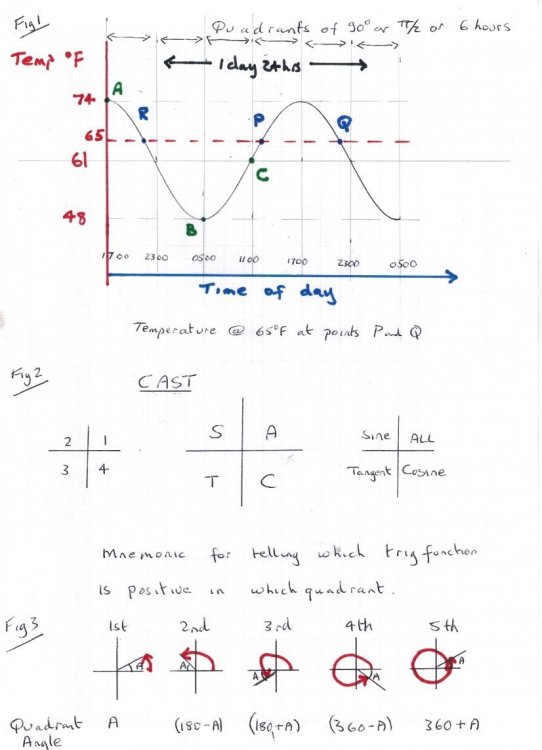Leaderboard
Popular Content
Showing content with the highest reputation on 01/18/22 in all areas
-
I guess as a general statement - infectious diseases fundamentally operate at population scales. Individual co-operation with public health measures have unavoidable implications for the population as a whole. The individual choice to get vaccinated, wear a mask, social distance, etc or not has a probabilistic impact on a pathogen's transmission and virulence properties. Those properties dictate how the disease spreads and how sick it makes people. This of course generates an intrinsic conflict between individual rights, and public health priorities. On the other hand, there's stop signs, red lights, hazardous waste disposal laws, fire regulations, etc. so it's not exactly unprecedented that you may be expected to suffer minor inconvenience for the wellbeing of others, and people don't seem to get all righteous about their FrEeDuM to be a selfish, childish prick that endangers other people when it comes to those other circumstances.2 points
-
2 points
-
Being an Australian but living abroad I've been loosely following and enjoying the bureaucratic bungling of the whole issue by Scotty from Marketing and his administration. It has been a very publicly embarrassing debacle, which given my general sentiments towards the Liberals, is quite the popcorn feast. I do keep reading about Djokovic sticking by his principles/being principled, and thus being of strong moral fiber... but if you undergo some kind of action to publicly take a stand on a given issue, then attempt to subvert or otherwise avoid the consequences, you're just a garden variety hypocrite. If this really was the hill he wanted to die on, he should have boycotted the Australian Open in the first place. I also have to admit I have a particularly malevolent attitude towards public figures who use their position of privilege to flout and undermine public health efforts in the midst of a pandemic. You may as well be supplying arms to terrorists or dumping oil in the arctic and bragging about it.2 points
-
If you set up a kiddie wading pool, maybe one of those 8' ones in a sunny place, add a handful of Azolla, by the end of the summer you'll have a 55 gallon drum full of very nitrogen rich Azolla that can be composted or even plant things directly in compressed Azolla in a pot, I used to use half sawdust and half Azolla for my birds nest ferns, Azolla fixes nitrogen from the atmosphere using photosynthesis. I used to harvest and compost it regularly.2 points
-
I have been asked by a member to comment on this worked example question encountered in an online tigonometry course. The temperature during the week oscillates daily between 48o and 74o. (presumabably Farenheit). If the minimum occurs at 5am, at what time is the temperature at 65oF ? The lecturer chooses a sinusoidal model for the variation, but uses a very overcomplicated method where he arrives at and solves the following equation. [math]f\left( \theta \right) = - 13\cos \left( {\frac{\pi }{2}\left( {\theta - 5} \right)} \right) + 61[/math] Here are my comments. The lecturer has chosen to use a cosine wave as the model, using radian measure for the angles, and has come up with a 'grand unified' formula which is fraught with the dnager of miscalculations as will become clear. It is vey important to solve and understand the Physics as well as the Mathematics of a model. I have shown the Physics in Fig1, covering both the day in question and part of the day before and part of the day after. The lecturer failed to note the characteristics of a sinusoidal wave - that it passes throuhg its speial points (its peaks and zeros) at spacings of 90o or 6 hours or 'quadrants'. This is possibly because he thought to work in radians. It is worth noting that most scientific instruments that measure angle use the degrees, minutes and seconds units. Almost none read directly in radians. Maybe this is why he made the incorrect statement that we cannot locate the peaks, troughs and zeros of the model wave, only the minimum at 5am. I have labelled the important ones A, B and C in green in Fig1. I have also shown where the target 65oF intersects the model curve at P and Q within the target day and at R on the day before. It is also worth noting that working in DMS (degrees etc) has advantages in some disciplines since time, latitude and longitude in geography and azimuth and right ascension in astronomy are measured in these. So 15o corresponds to 1 hour. The lecturer also points out that there are actually many angles that satisfy the inverse trigonometric equation, but goes on to make very heavy weather of choosing the right one. He doesn't stress enough that a calculator or set of tables will only provide one of these angles, not necessarily the one you want. So I have shown in Fig2 and Fig3 the standard way of overcoming this issue. If positive values are taken the calculator or table will always give you the first quadrant anngle (I have called A to distinguish from his theta). A mnemonic based on the english word CAST is shown to help remember which trig functions are positive in the other quadrants as well. Fig3 shows how to establish the angles to be used in each quadrant. So here are 3 separate ways of working this out, without solving that overblown equation. We will see how my comments pan out as we work through them. So starting from point A which is the normal starting point of a cosine wave, where the cosine has a value of +1. This must be two quadrants of 6 hours ie 2x6 =12 hours back from the minimum at 5am (point B). That is 5pm the previous day. Counting from point A Sorry I see I've used A for both the angle and the point, hopefully this will not cause too much confusion. P is in the 4th quadrant, Q is in the 5th quadrant, but one day later than R which is in the first quadrant and therefore at the same time of day as Q. for point R, cos A = 4/13 therefore A = 72o or 72/15 = 4.8 hours later than point A So R is the point at 1700 + 4.8 hours or 21.8 hours, the previous day. So Q is the point at 21.8 hours on the target day in question. P is in the 4th quadrant so is (360-A) = (360- 72) = 288o . 288 degrees is 288/15 = 19.2 hours So P is the point at 1700 + 19.2 hours or 1700 +6+6+6+1.2 hours = 12.2 hours the following day. Counting from point B In relation to point B, P is in the second quadrant and Q is in the third quadrant. Thus both P and Q will have negative cosines. Using a calculator to calculate the inverse cosine of -(4/13) will correctly give the correct angle of 108o. However there is a trap here as this will not give the value for Q directly. Better to ignore the -ve and follow the standard procedure of Fig3. For P Angle = [math]180 - {\cos ^{ - 1}}\left( {\frac{4}{{13}}} \right)[/math] ie (180 - 72) ie 108o or 108/15 = 7.2 hours For Q Angle = [math]180 + {\cos ^{ - 1}}\left( {\frac{4}{{13}}} \right)[/math] ie (180 + 72) = 252o or 252/15 = 16.8 hours So P is the point at 0500 + 7.8 = 12.2 hours and Q is the point at 0500 + 16.8 = 21.8 hours. Counting form point C Since C is a zero it would be the natural point to count from if modelling with a sine wave, rather than a cosine wave. P is then in the first quadrant and Q in the second so both are then positive. So Angle is [math]{\sin ^{ - 1}}\left( {\frac{4}{{13}}} \right) = {18^o}[/math] ie 18/15 = 1.2 hours So P is the point 1100 + 1.2 = 12.2 hours For Q we have Angle = (180 - 18) = 162o ie 162/15 = 10.8 hours So Q is the point 1100 + 10.8 = 21.8 hours. So all three methods come up with the same answer (and the same one the lecturer obtained) But it shows the value of solving the Physics as well as the fancy trigonometry.1 point
-
Is there a book, or a few, that not many people know, but blew your mind? The rules: 1) Scientific books: Anthropology, Biology, Chemistry, Engineering, Linguistics, Mathematics, Paleontology, Physics,... The lot! But mainstream science. 2) Not "bibles" of the scientific literature, but can be relatively unknown books from famous author. For example: Dirac's Principles of Quantum Mechanics is not allowed, but Dirac's Lectures on Quantum Mechanics, could be OK. Not best sellers. 3) They can be either technical, or popular science Here's mine: The Quantum Theory of Atoms, molecules, and Photons by John Avery It's a book by a quantum chemist that takes you on a journey of basically everything essential about the quantum. The title is very telling of what it does. Tell me about your hidden treasure.1 point
-
Like the nut carrying the sign from the Melbourne anti vaxx march.... He has said it himself. I didn't say all of them, but a big majority of them yes.... Yes, yes, the one's crying out freedom!! freedom!!! but at the same time chose to disregard the science and health edicts and law of the land...you know, like obeying red lights, and such.1 point
-
1 point
-
I don't think the comparison was humans to other living organisms, but humans to other components of the universe. If we know smallest and largest, we know where we fall. Don't we?1 point
-
An understandable ( I hope ) explanation of gravitational binding vs. expansion ... If we consider gravitational potential as a negative potential, the Cosmological Constant/vacuum energy is then a positive scalar constant throughout the universe. ( the CC was used by A Einstein to balance the global gravitational potential ) The gravitational potential can be imagined as potential wells, or pits, and the CC/vacuum energy is, then, like a small step-ladder. If the well/pit is more than 1 m deep ( 2 m, 10 m, or even 1000 m ), but your step-ladder is 1 m, you can't get out, and are gravitationally bound. If the gravitational potential is much less, as it is in the vast expanses between galaxies and galaxy clusters, such that the well/pit is only 1/2 m, less than 1 m or none at all, then the step-ladder would get you to a height where you can 'fall away' from the pit, and you are not gravitationally bound. IOW, there is a 'threshold' that the CC/vacuum energy has to exceed before expansion can take effect.1 point
-
Vaccination programmes are necessarily about teamwork for them to work, and there is no 'I' in 'team'.1 point
-
In 1D, it should be easy to see that there are discrete wavelengths, since you will get destructive interference if the path length is not a multiple of the half-wavelength. So other wavelengths will not persist. If you consider 3D, there are more paths available and you have more options that avoid destructive interference, but you will still have wavelengths that are excluded from possibility.1 point
-
Lives of a Cell by Lewis Thomas was a favourite of my youth. Structures - or why things don't fall down by JE Gordon1 point
-
I loved "Longitude"! Sobel made more sense out of navigation, timekeeping and related topics than anything else I've read. I second BC's recommendation.1 point
-
What is Real, by Adam Becker. Fascinating history of quantum foundations, with particular attention to those who pushed back against the long dominance of Copenhagen.1 point
-
Sigh... Here we go again. You do know the difference between the articles 'a' and 'the' I hope. Further, James was also called 'the brother of Christ' in Flavius Josephus Antiquities of the Jews. And I hope you know 'Cephas' is the disciple Peter. Expectations? Whose? Yours? Carrier's? The Pauline epistles are letters to churches he grounded, and meant to react on all kind of problems and theological questions that arose there. He was spreading his variation of believe what was Jesus' aim: not just reinstate the laws of Jews to them, but to prepare for the apocalypse also for the gentiles. This point was probably that which Paul quarreled about with Peter and James. I do not assume 'your book' is a scholarly work based on classical text analysis, put in the historical context in that time. Basically, you are just saying "I don't like it, so it is not true". I am not a Christian, but assuming he existed, makes a much better understanding of the development of early Christianity: the change in character of the gospels the later they are written, the bending of the story of Jesus' birth to fit the prophecies in the old Testament, the mentioning of John the baptist (also mentioned in non-Christian sources), and the mentioning of Jesus (or 'Christ') in a few non-Christian sources (including his crucifixion). So instead of taking the texts as they come to us, compare them, set them in historical context, you base your opinion on a psychological 'analysis' of Paul's character? There go many suppositions in such a stance. Above I wrote what the epistles of Paul were meant for. You find out by reading the texts, and analysing them in their context.1 point
-
0 points













